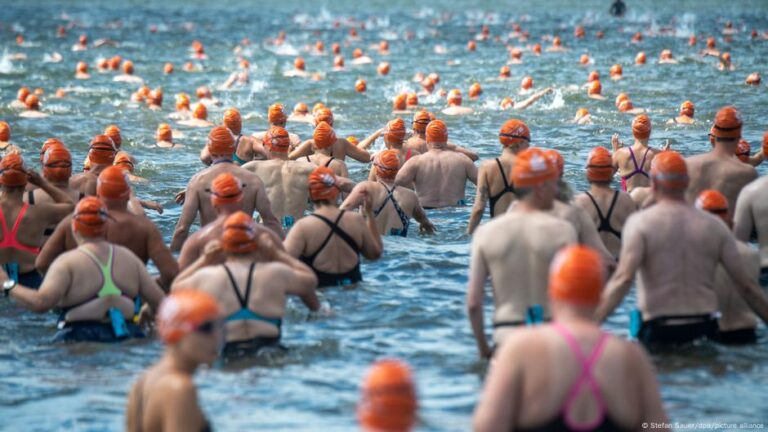What you need to know
- Vibriosis is caused by Vibrio bacteria, which live naturally in brackish, warm, low-salinity coastal waters
- Typical European locations include the Baltic Sea, North Sea and Black Sea
- Climate change may be leading to more favorable conditions for Vibrio bacteria
- Symptoms include: diarrhea, stomach cramps, nausea, fever
- Protect yourself by avoiding raw or undercooked shellfish, and don’t swim in these waters with open wounds
Scientists attribute a lot to climate change these days — with some things being easier to prove than others.
When it comes to Vibrio bacterial infections, there appears to be a strong link — because Vibrio bacteria thrive in warm waters, especially when salt levels are low.
And in the Baltic Sea, sea surface temperatures are indeed going up, while salinity levels are going down, which researchers have linked to the effects of climate change.
As sea temperatures rise, so do the numbers of Vibrio infections in Nordic countries bordering the Baltic Sea.
Vibrio infections remain relatively rare, but health agencies like the European Centre for Disease Prevention and Control warn of increased risks of Vibrio infections during summers with extended heatwaves.
What is vibriosis?
Vibrio bacteria cause vibriosis and cholera. For the purpose of this article, we are focusing on vibriosis, which is sometimes referred to as vibriosis (non-cholera).
Vibriosis is an infection that can become serious and life-threatening, especially among people with weakened immune systems.
The main types of Vibrio bacteria that cause human infection are Vibrio vulnificus, Vibrio parahaemolyticus, and Vibrio alginolyticus, but there are at least a dozen types.
Some Vibrio infections can lead to the death of flesh around an open wound (known as necrotizing fasciitis).
Rarer types of Vibrio vulnificus infections can cause serious illness, requiring intensive care or limb amputation.
In the US, about 1 in 5 people die within two days of contracting a Vibrio vulnificus infection, according to the US Centers for Disease Control and Prevention (CDC). The CDC estimates around 80,000 illnesses and 100 deaths from Vibrio infections annually in the US.
How do you get vibriosis?
Most people get vibriosis in the gut by eating raw or undercooked shellfish, such as oysters, mussels and clams. You can also get it by swallowing water when swimming in infected coastal waters.
You can also get a blood infection when bacteria enter the body through cuts to the skin, either when swimming or, for example, when on land, water from shellfish drips onto an open wound.
People with pre-existing conditions may have a higher risk of infection. This includes people with liver damage through hepatitis, liver disease, excessive alcohol or drug use. But also people with cancer, diabetes, HIV — those on immune-suppressing therapies — or those taking medicine to reduce stomach acid.
Vibriosis cannot be transmitted from one person to another.
How do you protect yourself against vibriosis?
To avoid vibriosis, do not eat raw or uncooked shellfish.
Health agencies also recommend avoiding swimming in brackish waters or saltwater if you have open wounds. And if you get a cut while swimming, leave the water and have it cleaned and properly dressed.
If you have an existing condition, know your immune system to be compromised, or have recently had any surgery and want to swim in a coastal area, check with your doctor for appropriate advice.
What are the symptoms of vibriosis?
The symptoms of vibriosis depend on the type of infection. But, generally, they are similar to those of most other common infections, like influenza or an upset stomach:
- Diarrhea
- Cramps
- Nausea
- Vomiting
- Fever
- Chills
Signs of a bloodstream vibriosis infection include extremely low blood pressure and blistering around skin lesions. And Vibrio wound infections can cause symptoms like redness, pain, swelling and weeping wounds.
Where are vibrio bacteria most common?
In Europe, the Baltic Sea is a prime location for Vibrio bacteria. That affects people in coastal areas of Denmark, northeastern Germany, Finland, Estonia, Latvia, Sweden, Lithuania, Poland and Russia.
In the North Sea, the bacteria live around the Dutch and Belgian coasts. And towards southeastern Europe, they are concentrated in the Black Sea, affecting people in Romania, Bulgaria, Turkey and Ukraine.
The total number of Vibrio illnesses in Europe annually is in the hundreds. A significant spike was observed in 2018, when 445 cases were reported.
North America and Southeast Asia are similarly affected.
Brackish coastal locations are good breading grounds for Vibrio bacteria — first, because that is where saltwater and freshwater mix; and second, because they are often enclosed or estuarine. The bacteria can thrive, almost undisturbed.
Is climate change to blame for the rise in vibriosis illnesses?
Climate change has not caused Vibrio bacteria outbreaks.
However, the European Centre for Disease Prevention and Control warned on July 11, 2025, that favorable conditions for Vibrio bacteria were becoming “increasingly common in parts of Europe due to climate change.”
In June 2025, the European Environment Agency (EEA) said: “[R]ecent marine heatwaves have led to unprecedented levels of vibriosis infections along the Baltic Sea and North Sea coasts.”
According to the EEA’s calculations, average sea surface temperatures in the Baltic rose from less than -1 ºC in 1990 to about 0.5 ºC in 2024.
Other studies over the past decade have suggested that increased river-runoff into the Baltic, due to climate change, was adding more freshwater to the estuarine area and therefore decreasing salinity levels.
So, climate change is not to blame for vibriosis, but it is increasing the threat.
Edited by: Fred Schwaller


